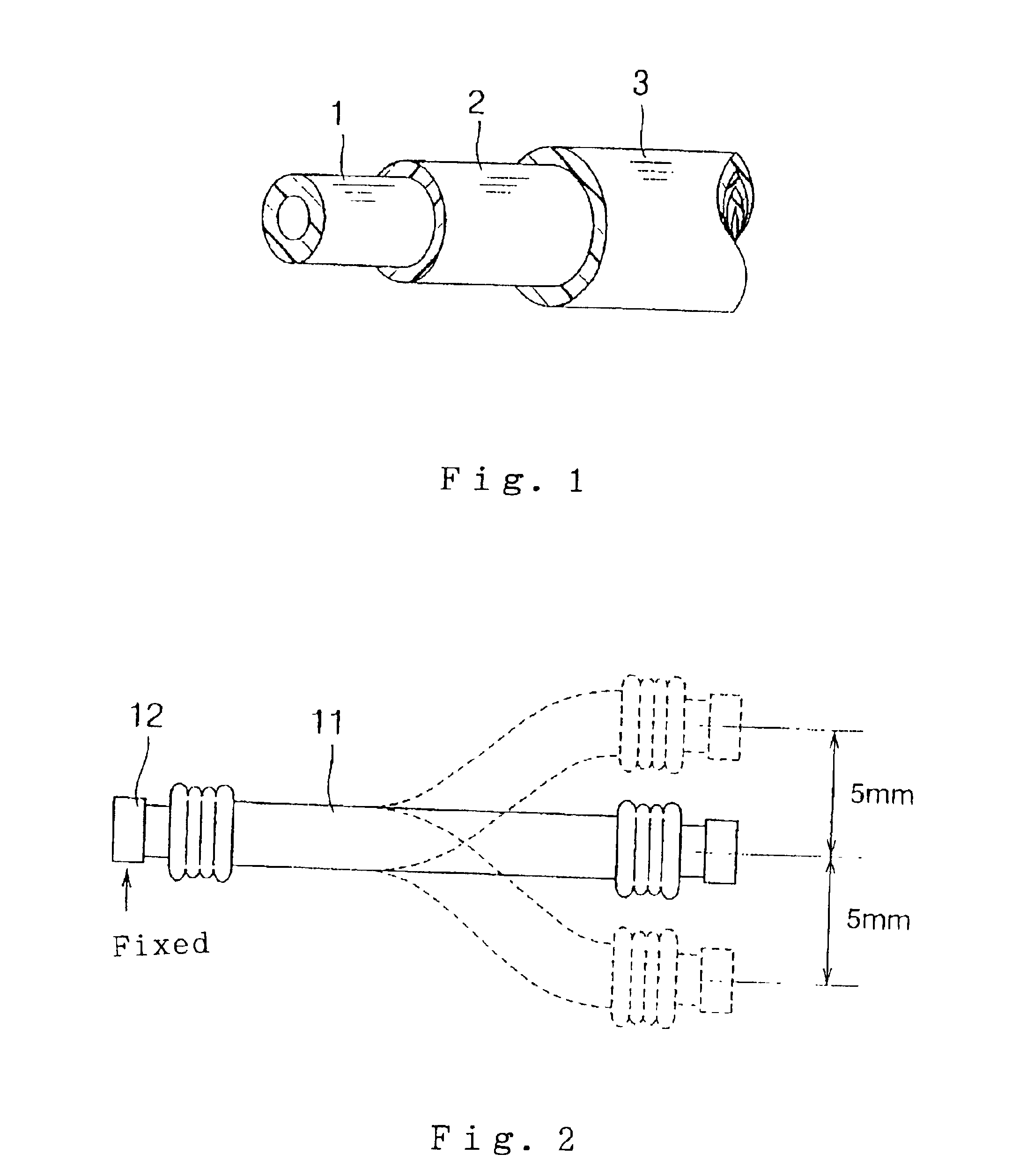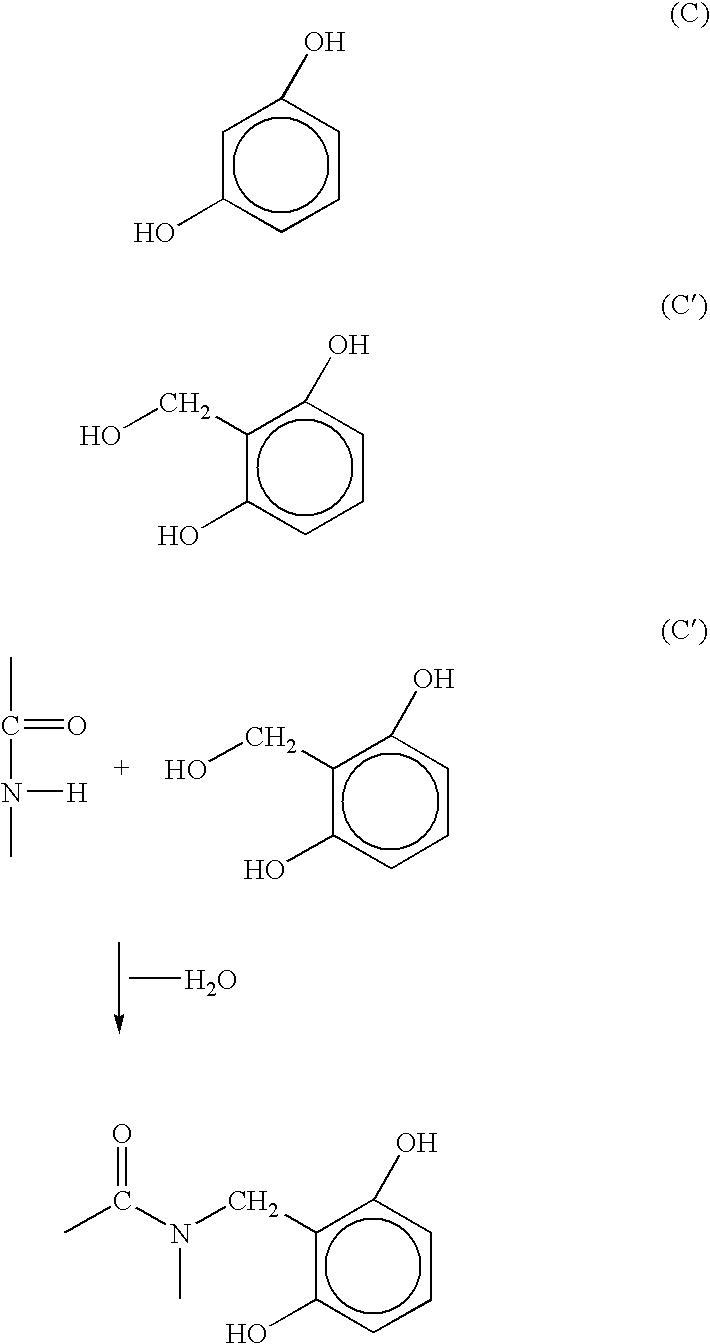Hose
a technology of hoses and rubber layers, applied in the field of hoses, can solve the problems of insufficient adhesion between rubber layers and metal foil laminates, complex production processes, and high cost, and achieve the effects of less cost, light weight, and superior gas barrier properties
- Summary
- Abstract
- Description
- Claims
- Application Information
AI Technical Summary
Benefits of technology
Problems solved by technology
Method used
Image
Examples
example 1
Preparation of Rubber Composition
First, 100 parts of the above EPDM, 4.2 parts of the above peroxide vulcanizing agent, 1 part of the above resorcinol compound, 0.77 parts of the above melamine resin, 100 parts of the above carbon black and 60 parts of the above process oil were blended, and then the resulting mixture was kneaded by means of a roll mill for preparation of a rubber composition.
Production of Hose
The rubber composition thus prepared was extruded around a mandrel for formation of an unvulcanized rubber layer, and then a laminate film (PA6 film / SUS foil / PA6 film) having a total thickness of 70 μm was wrapped on an outer peripheral surface of the unvulcanized rubber layer for formation of a laminate. Then, the rubber composition was extruded on an outer peripheral surface of the laminate. After the resulting hose structure was entirely subjected to a vulcanizing process at 160° C. for 45 minutes, the mandrel was removed. Thus, a hose (see FIG. 1) was produced, which inclu...
example 13
Preparation of Rubber Composition
First, 100 parts of the above EPDM, 4.2 parts of the above peroxide vulcanizing agent, 1 part of the above resorcinol compound, 0.77 parts of the above melamine resin, 100 parts of the above carbon black and 60 parts of the above process oil were blended, and then the resulting mixture was kneaded by means of a roll mill for preparation of a rubber composition.
Production of Hose
The rubber composition thus prepared was extruded around a mandrel for formation of an unvulcanized rubber layer, and then a laminate film (PA6 film / aluminum foil / PA6 film) having a total thickness of 70 μm was wrapped on an outer peripheral surface of the unvulcanized rubber layer for formation of a laminate. Then, the rubber composition was extruded on an outer peripheral surface of the laminate. After the resulting hose structure was entirely subjected to a vulcanizing process at 160° C. for 45 minutes, the mandrel was removed. Thus, a hose (see FIG. 1) was produced, which ...
PUM
| Property | Measurement | Unit |
|---|---|---|
| Percent by mass | aaaaa | aaaaa |
| Percent by mass | aaaaa | aaaaa |
| Fraction | aaaaa | aaaaa |
Abstract
Description
Claims
Application Information
 Login to View More
Login to View More - R&D
- Intellectual Property
- Life Sciences
- Materials
- Tech Scout
- Unparalleled Data Quality
- Higher Quality Content
- 60% Fewer Hallucinations
Browse by: Latest US Patents, China's latest patents, Technical Efficacy Thesaurus, Application Domain, Technology Topic, Popular Technical Reports.
© 2025 PatSnap. All rights reserved.Legal|Privacy policy|Modern Slavery Act Transparency Statement|Sitemap|About US| Contact US: help@patsnap.com



